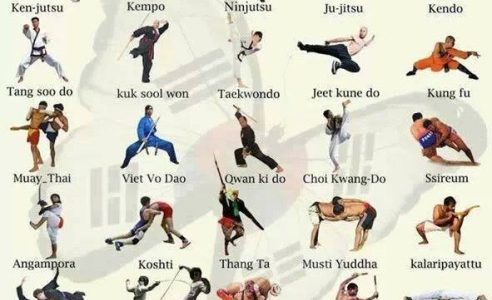A Historic Introduction And Development Of Martial Arts Across The Globe
A Historic Introduction And Development Of Martial Arts Across The Globe
Blog Article
Material Author-Egeberg Graham
Martial arts have a fascinating history that covers centuries and continents. You may locate it interesting exactly how old methods like Shuai Jiao and Kalaripayattu prepared for contemporary combat methods. These disciplines not just stress physical abilities but additionally reflect the societies that birthed them. As you explore their evolution, think about just how globalization has changed these typical kinds right into crossbreed styles. What youth martial arts classes near me do you believe have shaped today's martial arts landscape?
Ancient Martial arts: The Foundations of Combat
As you explore the world of ancient martial arts, you'll find the abundant structures that formed fight techniques across societies. Very early techniques concentrated on Self-Defense and survival, commonly including strikes, hurting, and weaponry.
In old China, for example, techniques like Shuai Jiao emphasized throws and joint locks, while India's Kalaripayattu showcased dexterity and fluid activity. Japanese samurai created Kenjutsu, a refined swordsmanship that highlighted self-control and strategy.
These martial arts served not just for fight yet also as a way of personal advancement, instilling values like respect and willpower. The blending of these methods gradually prepared for the diverse martial arts you see today, each showing the special philosophies and requirements of its society.
The Cultural Impact on Martial Arts Growth
While martial arts often reflect the functional demands of a society, they also personify the cultural worths and ideas of their beginnings. When what martial art should i do explore different martial arts, you'll notice exactly how they're affected by religious beliefs, viewpoint, and social standards.
As an example, the focus on respect and self-control in Japanese martial arts comes from Zen Buddhism and samurai society. In contrast, Brazilian Jiu-Jitsu advertises adaptability and approach, shaped by the demand for efficiency in a diverse, multicultural setting.
You could find that the routines, uniforms, and training approaches reflect a neighborhood's background and identity. By recognizing these social impacts, you grow your gratitude of martial arts and their duty in shaping human experiences across the globe.
Modern Adaptations and the Globalization of Martial arts
Martial arts have actually changed dramatically in current decades, adapting to contemporary culture and international impacts. You'll discover that conventional kinds have combined with modern strategies, producing hybrid styles like mixed martial arts. These adaptations cater to varied audiences, making martial arts available and enticing globally.
With the surge of social networks and digital systems, you can discover tutorials and competitions from all edges of the globe, damaging geographical obstacles. This globalization has actually brought about a shared gratitude for various self-controls, from Brazilian Jiu-Jitsu to Taekwondo.
As martial arts training involve with these arts, you'll realize they're not nearly fight; they promote health and fitness, discipline, and mental health.
Eventually, modern-day adjustments have actually enriched the martial arts landscape, making it a dynamic and advancing practice.
Conclusion
In discovering the history and evolution of martial arts, you discover a fascinating blend of methods, cultures, and philosophies. From ancient disciplines like Shuai Jiao and Kalaripayattu to the modern versatility seen in MMA, martial arts reflect mankind's mission for Self-Defense and personal growth. As you engage with these methods, you not just gain abilities however additionally a much deeper recognition for the varied traditions that shape our globe today. So, proceed your journey and welcome the art of battle!
